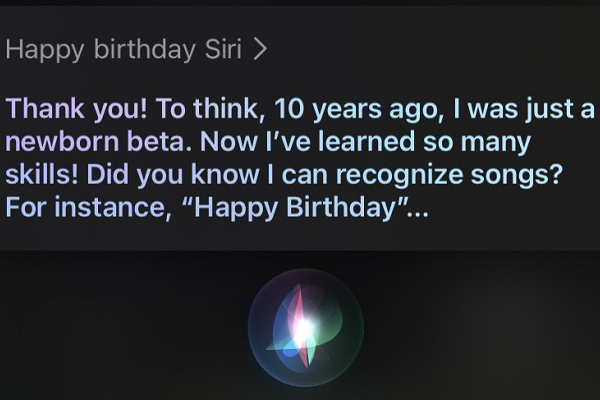Siri’s Decade: The Highlights of Apple’s Voice Assistant Evolution
 Apple introduced the world to its new voice assistant Siri 10 years ago when former senior vice president Phil Schiller presented the iPhone 4S and what he called its “coolest feature.” The decade that followed saw a massive explosion in virtual assistants, with Siri’s central place on iPhones one of its few bastions against rivals like Google Assistant and Amazon’s Alexa. Siri is far smarter and more capable than the limited appointment maker and weather adviser Schiller proudly demonstrated in 2011. To celebrate the birthday, Apple added a few extra responses and jokes to Siri’s repertoire, but we’ve pulled out some of the more significant moments in Siri’s evolution besides understanding when it hears people sing Happy Birthday.
Apple introduced the world to its new voice assistant Siri 10 years ago when former senior vice president Phil Schiller presented the iPhone 4S and what he called its “coolest feature.” The decade that followed saw a massive explosion in virtual assistants, with Siri’s central place on iPhones one of its few bastions against rivals like Google Assistant and Amazon’s Alexa. Siri is far smarter and more capable than the limited appointment maker and weather adviser Schiller proudly demonstrated in 2011. To celebrate the birthday, Apple added a few extra responses and jokes to Siri’s repertoire, but we’ve pulled out some of the more significant moments in Siri’s evolution besides understanding when it hears people sing Happy Birthday.
Push to Talk Ends
Talking to Siri originally required pushing a button on the iPhone, making it necessary to hold the phone to talk to the voice assistant. The arrival of the iPhone 6S in 2015 changed that with the first hands-free option via the still used wake words, “Hey, Siri.”
AirPods Hands-Free
Hearables have been one of Apple’s more successful areas, with the AirPods and their later iterations consistently coming out ahead in the market. Siri’s value to the earbuds rose dramatically with the AirPods Pro, which was the first to bring hands-free Siri activation to wearable tech. Instead of pressing a button, users can awaken Siri with the same wake words they use on their phones.
Carplay
Siri gained a significant edge over potential rivals in 2014 when Apple CarPlay arrived. The new feature enabled drivers to give Siri commands that would be translated to the vehicle wirelessly. Drivers initially could ask the voice assistant to play music and control the climate, but the newest versions essentially make Siri the brain of the car, capable of turning it on or off and running a wide range of the phone’s apps by voice.
HomePods
Apple first attempted to bring Siri into people’s homes with the HomePod in 2018. The smart speaker lasted until early 2021, when it was discontinued. Siri continues on the HomePod Mini, which came out in late 2020. As part of the integration into smart homes, Apple enhanced Siri with the “What’s My Update ” feature that pulls together local and personal information into a single report and an Intercom feature that lets multiple smart speakers and mobile devices communicate with each other.
Shortcuts
Siri Shortcuts was added a few years ago to customize voice commands for running apps to open and run apps or set up simple routines that control phone features. Developers can place a button in their apps to urge users to record a custom phrase. Users have to record the command themselves and link it to a specific action before Siri recognizes it.
Homekit Integration
Apple announced at the latest WWDC event that third-party devices with HomeKit will be able to start integrating Siri. This marks a first for adding the voice assistant to non-Apple devices, though still built with the Apple HomeKit. Users will be able to access the voice assistant on any approved device connected to their network.
On-Device Processing
More indicators that Siri is playing catch-up can be found in the features in the new iOS 15. Siri can now run some of its tasks without the internet, processing the commands on the device more efficiently. According to Apple, this is as much about people’s data security as it is about making the voice assistant more appealing in more contexts.
Follow @voicebotai Follow @erichschwartz
Apple Debuts Siri Support on Third-Party Devices and Offline Access at WWDC
Apple Introduces $99 HomePod Mini Smart Speaker in a Bid for the Entry-Level Market








